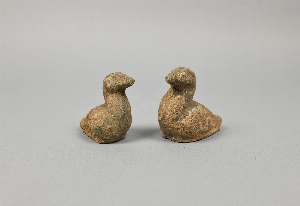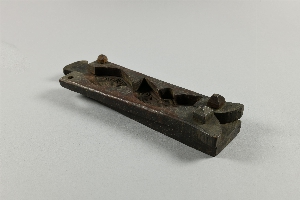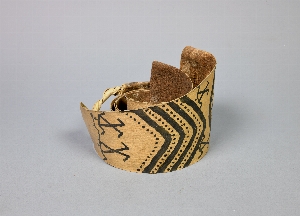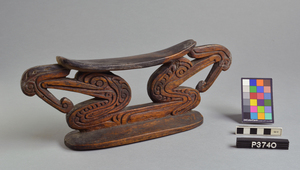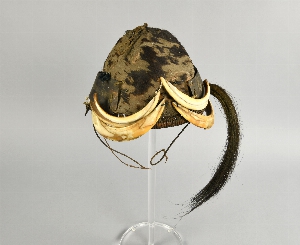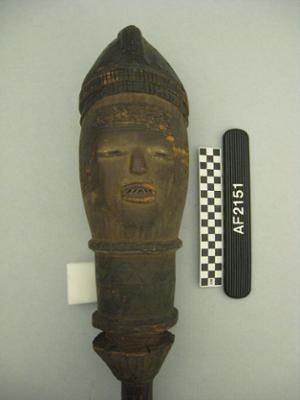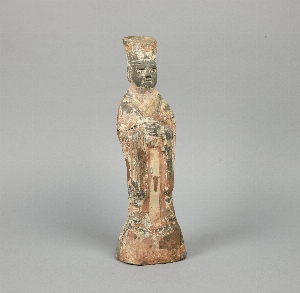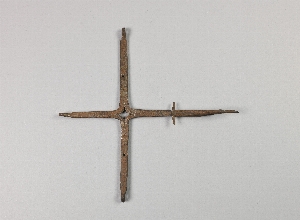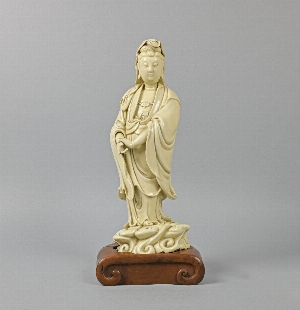What In the World TV Program
Exhibition (01 Jan 1954 - 31 Dec 1954)
- Object[97]
- african[20]
- american[29]
- asian[18]
- egyptian[5]
- mediterranean[4]
- near eastern[8]
- oceanian[13]
- animal effigy[1]
- back strap[5]
- bail amphora[1]
- bell[1]
- belt[1]
- bowl[2]
- brooch[1]
- cake mold[1]
- carrying stick[1]
- carving[2]
- club[1]
- comb (hair - grooming tool)[1]
- cricket cage[1]
- cup[1]
- dagger[1]
- dance ornament[1]
- double bell[1]
- drum handle[2]
- effigy[1]
- effigy vessel[2]
- figure[1]
- figurine[4]
- figurine head[1]
- fish drag[1]
- funerary ewer[1]
- hat[1]
- head[1]
- head ornament[1]
- headband[1]
- headdress[1]
- human statuette[1]
- jar[2]
- jug[1]
- key[1]
- knife[1]
- mask[5]
- mask fragment[1]
- maskette[1]
- meat strainer[1]
- milk vessel[1]
- milk vessel lid[1]
- mirror[1]
- model[1]
- mortar[1]
- mortuary barnyard[1]
- mortuary ewer[1]
- mortuary figurine[3]
- mortuary statue[1]
- neck rest[1]
- packet[1]
- pestle[1]
- plate[1]
- polycandela[1]
- pottery[1]
- pounder[1]
- relief[2]
- reliquary[1]
- saucer[1]
- scraper[1]
- sculpture[3]
- shark hook[1]
- shield[1]
- shovel[1]
- spear[1]
- staff[1]
- statue[1]
- statuette[8]
- taro pounder[1]
- tetradrachm[1]
- tomahawk[1]
- toy[2]
- vase[1]
- vessel[2]
- wand[1]
- water container[1]
- zoomorphic vessel[1]
- alaska[4]
- allegheny reservation[1]
- angola[1]
- belgian congo[1]
- bengal[1]
- benin kingdom[3]
- beth shean[4]
- bolivia[1]
- brazil[3]
- british columbia[5]
- british new guinea[3]
- buhen[1]
- but[1]
- canada[6]
- cattaraugus reservation[1]
- china[7]
- coban[1]
- connecticut[2]
- corrego grande[1]
- cyprus[1]
- d'entrecasteaux islands[1]
- davao[5]
- department of alta verapaz[1]
- east cape[1]
- ecuador[1]
- egypt[4]
- esmeraldas[1]
- french guiana[1]
- fujian[1]
- gabon[2]
- gawa[1]
- ghana[1]
- gravefield i[1]
- greenland[1]
- guatemala[2]
- hawaiian islands[1]
- india[5]
- iraq[1]
- israel[4]
- italy[1]
- ivory coast[1]
- japan[3]
- kaminaljuyu[1]
- kararau[1]
- kasai district[1]
- kenya[1]
- kitunda[1]
- komering agong[1]
- lapithos[1]
- limpiisk tundra[1]
- maine[1]
- maritime congo[1]
- mathura[1]
- matto grosso[2]
- mediterranean[2]
- mexico (central america)[1]
- mindanao[5]
- mit-rahineh[2]
- nazca district[1]
- nerhama[1]
- new guinea[5]
- new york[3]
- nigeria[4]
- north america[1]
- northeastern zaire[1]
- northern luzon[1]
- nubia[1]
- oaxaca (mexican state)[1]
- oro bay[1]
- pachacamac[1]
- palmyra[1]
- peru[2]
- philippine islands[6]
- point barrow[2]
- point barrow region[1]
- santong[1]
- sao lorenco river[1]
- sherbro island[1]
- siberia[2]
- sierra leone[1]
- sitia chiefdom[1]
- sitka[1]
- south africa[3]
- south arabia[2]
- sudan[1]
- sumatra[1]
- suriname[1]
- syria[1]
- taiwan[1]
- tamlu[1]
- tiahuanaco[1]
- tibet[1]
- united states of america[7]
- upper kuluene river[1]
- upper xingu river[1]
- ur[1]
- utkiavik[1]
- vancouver island[5]
- yoni[1]
- zaire[3]
- 18th century[1]
- byzantine[2]
- contemporary[1]
- edo period[1]
- eighteenth dynasty[1]
- han dynasty[3]
- iron age ia[1]
- kushan[1]
- late period[1]
- later han dynasty[1]
- ming dynasty[1]
- new kingdom[1]
- ptolemy i[1]
- qing dynasty[1]
- roman[1]
- roman period[2]
- angami[1]
- arapaho[1]
- ashanti[1]
- atayal[1]
- bafiot[1]
- bagobo[5]
- balega[1]
- baluba[1]
- bateke[1]
- baule[1]
- bontoc[1]
- buddhist[3]
- campanian[1]
- chinese[7]
- cypriot[1]
- eastern bororo[1]
- edo (africa)[3]
- eskimo[5]
- fang[1]
- hawaiian[1]
- hindu[1]
- indian[4]
- inuit-inupiaq[1]
- iroquois[3]
- japanese[3]
- kanioka[1]
- kekchi[1]
- kimbundu[1]
- kushan[1]
- kwakiutl[4]
- lampong[1]
- las charcas[1]
- masai[1]
- masongo[1]
- maues[1]
- miri[1]
- naravute[1]
- nootka[1]
- penobscot[1]
- ptolemaic[1]
- rengma[1]
- roman[2]
- sabaean[1]
- seneca[2]
- sherbro[1]
- south italian[1]
- tibetan[1]
- tlingit[1]
- tungus[1]
- vili[1]
- yoruba[1]
- zapotec[1]
- zulu[2]
- alexander the great[1]
- animal[3]
- antelope[1]
- athena[1]
- barnyard[1]
- bird[1]
- birds[1]
- crocodile[1]
- demon king[1]
- dog[1]
- dog team[1]
- duck[2]
- eagle[1]
- elephant's scalp[1]
- face[1]
- female head[2]
- guanyin[1]
- head[3]
- helmet[2]
- house[1]
- human figures[1]
- hyena[1]
- ibis head[1]
- krishna[1]
- leopard head[1]
- male[2]
- man[3]
- minister[1]
- ocelot[1]
- otter[1]
- pegasus[1]
- ritual object[1]
- seated child[1]
- seated woman[1]
- sled[1]
- soldier[1]
- thunderbolt[1]
- tortoise[1]
- warrior[1]
- youth[1]
- alabaster[1]
- bark[1]
- basalt[1]
- bone[5]
- brass[4]
- bronze[4]
- calf tail[1]
- cane (plant)[1]
- ceramic[14]
- clay[6]
- coconut shell[1]
- copper alloy[3]
- cotton[1]
- cowrie[1]
- deer hide[1]
- feather[2]
- feathers[1]
- fiber[1]
- fur[3]
- glass[2]
- glaze[2]
- gourd[2]
- gum[1]
- hide[1]
- horn (animal part)[1]
- iron[3]
- ivory[3]
- leaf[1]
- limestone[2]
- maple[1]
- marble (stone)[2]
- mountain sheep teeth[1]
- paint[3]
- palm leaf[1]
- peel[4]
- pentelic marble[1]
- pigment[11]
- plant fiber[2]
- porcelain[2]
- red cedar[1]
- red sandstone[1]
- seal bone[1]
- silver[2]
- slate[1]
- slip[1]
- spruce root[1]
- stain[1]
- steel[1]
- stone[1]
- travertine[1]
- walrus ivory[1]
- whale bone[1]
- wood[38]
- wool[1]
- arita style[1]
- carved[11]
- dehua ware[1]
- dhokra[1]
- enameled[1]
- fired[6]
- gessoed[1]
- glazed[3]
- incised[3]
- kakiemon ware[1]
- lost wax casting[2]
- painted[4]
- porcelain[1]
- red figure[1]
- red polished iii[1]
- slipped[1]
- cassandra painter[1]
- ptolemy i[1]
- unknown[1]
- actual citation[25]
- type citation[1]
1 - 30 of 97 Records
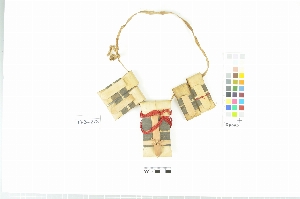

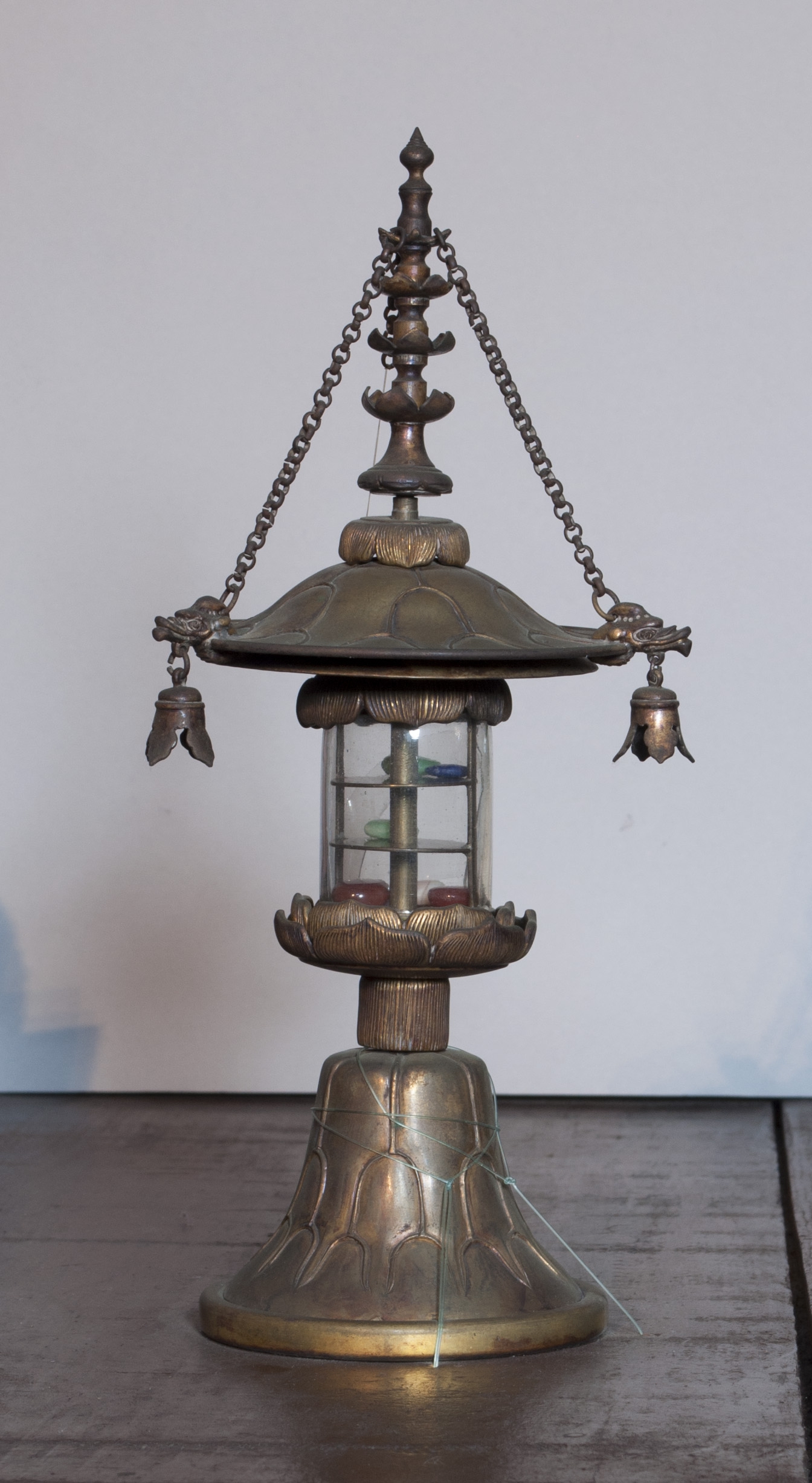

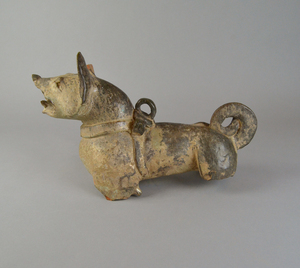
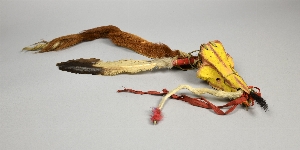
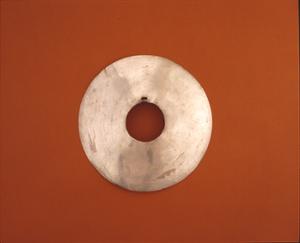
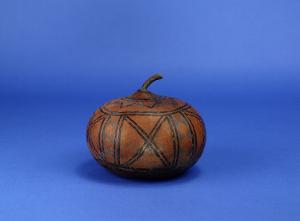

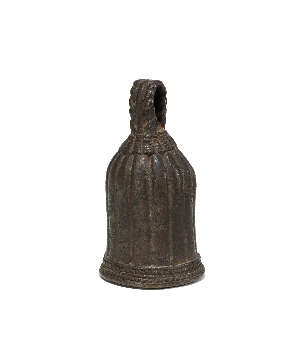
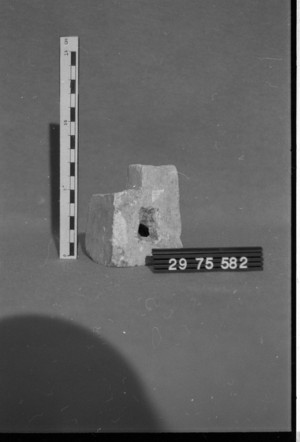
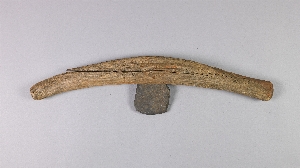
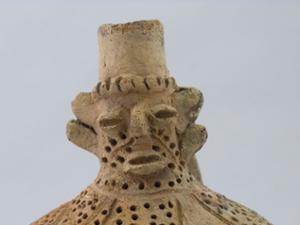

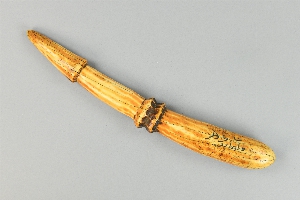

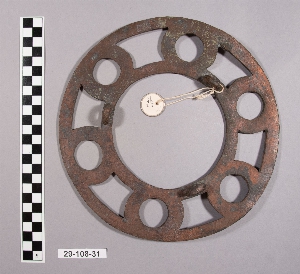
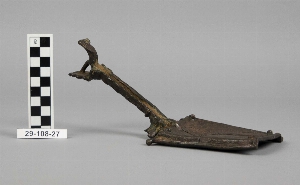
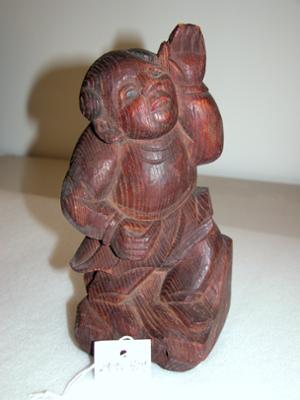
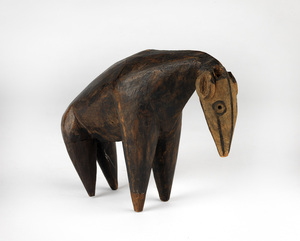
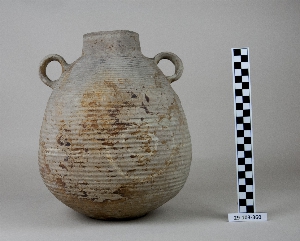
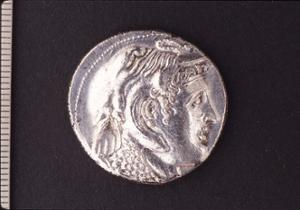
1 - 30 of 97 Records


